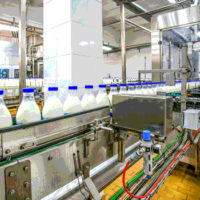The Costs of Foodborne Illness, Product Recalls Make the Case for Food Safety Investments

Since assuming the role of deputy commissioner for foods and veterinary medicine at the U.S. Food and Drug Administration (FDA) in 2016, I’ve had numerous occasions to speak publicly about food safety. On one of these occasions, I was part of a panel asked to address this topic: Taking food safety from risk management to growth generator.
Knowing that many in the food industry look at regulations as something that costs them money—money that could be invested instead in such areas as product innovation, facility upgrades, marketing, or other profit-generating components of the company—I want to focus here as well on the growth-generating potential of food safety regulations.
Let’s consider some statistics on the economic cost of foodborne illness in the United States, such as medical expenses and deaths, along with lost wages and economic productivity. A 2014 estimate from the U.S. Department of Agriculture placed the direct and indirect costs associated with illnesses caused by major foodborne pathogens at $15.6 billion per year. A more recent estimate from Ohio State University that covered all causes of foodborne illness, not just illness from the major foodborne pathogens, was at least $55.5 billion.
And what about costs associated with food recalls? In 2012, the Grocery Manufacturers Association (GMA) and the Food Marketing Institute estimated that the average cost for a food recall in the United States was $10 million. That number was just for the direct costs to the company, such as the retrieval and disposal of the recalled product. There are also indirect costs, including lawsuits, damage to a company’s or product’s reputation, and sales losses.
GMA also did a survey of several dozen multi-national corporations, and 18 percent indicated they had been involved in recalls with estimated costs between $30 million and $99 million each. Another 5 percent said they had been involved in recalls that cost more than $100 million.
These days, FDA gets involved in about 700 food-related recalls per year. Some are small and some are big. Some involve undeclared allergens or mislabeling, some involve particulates (e.g., glass, metal, or plastic), and some are due to microbial contamination.
If anything, the cost of a recall today is higher than it was in 2012. But even if you use the 2012 average figure of $10 million and multiply it by 700 recalls, that comes out to $7 billion in direct costs alone to industry annually. Throw in another $3 billion for the indirect costs to industry, and you’re talking a lowball estimate of $10 billion a year. In addition, there are numerous examples of significant damage to the reputation of brands and commodities, with an accompanying loss of market share. In some instances, market share never fully recovers or takes years to occur. There are reasons to think the indirect costs of recalls could be much higher.
Food safety problems are not bad just for companies that recall products. Even companies that market products similar to a recalled food can suffer, too. The worst thing that can happen to a food sector or the food industry is the loss of consumer confidence due to recalls or disease outbreaks.
Every food safety incident that is prevented, whether from the standpoint of industry or consumers, is nothing short of money in the bank. For industry, that $10 billion in recall costs is money that can be invested in growth-generating activities. For consumers, there are billions in healthcare costs associated with foodborne illness that come out of their pockets and could be used in other ways.
Food safety regulations can also generate growth in developing countries. This summer, the World Bank is expected to publish a report that shows the economic impact of food safety hazards, the consequences of the lack of food safety capacity, and the scale of economic returns from food safety investments in developing countries. This work should help make the case for devoting policy and public resources to strengthening food safety protections in low- and middle-income countries. That not only improves the domestic food supply in those countries but also facilitates exports. After all, the FDA Food Safety Modernization Act (FSMA) requires imported foods to meet the same food safety standards as foods produced domestically.
But most importantly, as someone who works at an agency that promotes public health through regulation, I know that food safety is good public health. That’s why FDA has, for the last 7 years, worked so hard to implement the FSMA requirements that will move the food safety system from one that reacts to problems to one that prevents them from occurring.
The food industry has worked cooperatively with FDA to implement FSMA. The vast majority of food producers want to protect their customers from harm, and many have provided key feedback as the FSMA regulations have taken shape. These same food producers want to protect their brand and want to be known for having high food safety standards. Food safety is good for business.
Just imagine a scenario in which food recalls were cut in half. That saves industry at least $5 billion per year and prevents a lot of foodborne illness. A 25 percent decrease in foodborne illness saves at least $4 to $14 billion per year.
I hope that with full implementation of FSMA, we achieve that and more. The partnership between FDA and the food industry is building a culture of food safety, not only in the United States but around the world as well. That will save money and generate growth. Most importantly, it will promote health and save lives.
Stephen Ostroff, M.D., is the deputy commissioner for foods and veterinary medicine at FDA.
Looking for a reprint of this article?
From high-res PDFs to custom plaques, order your copy today!





